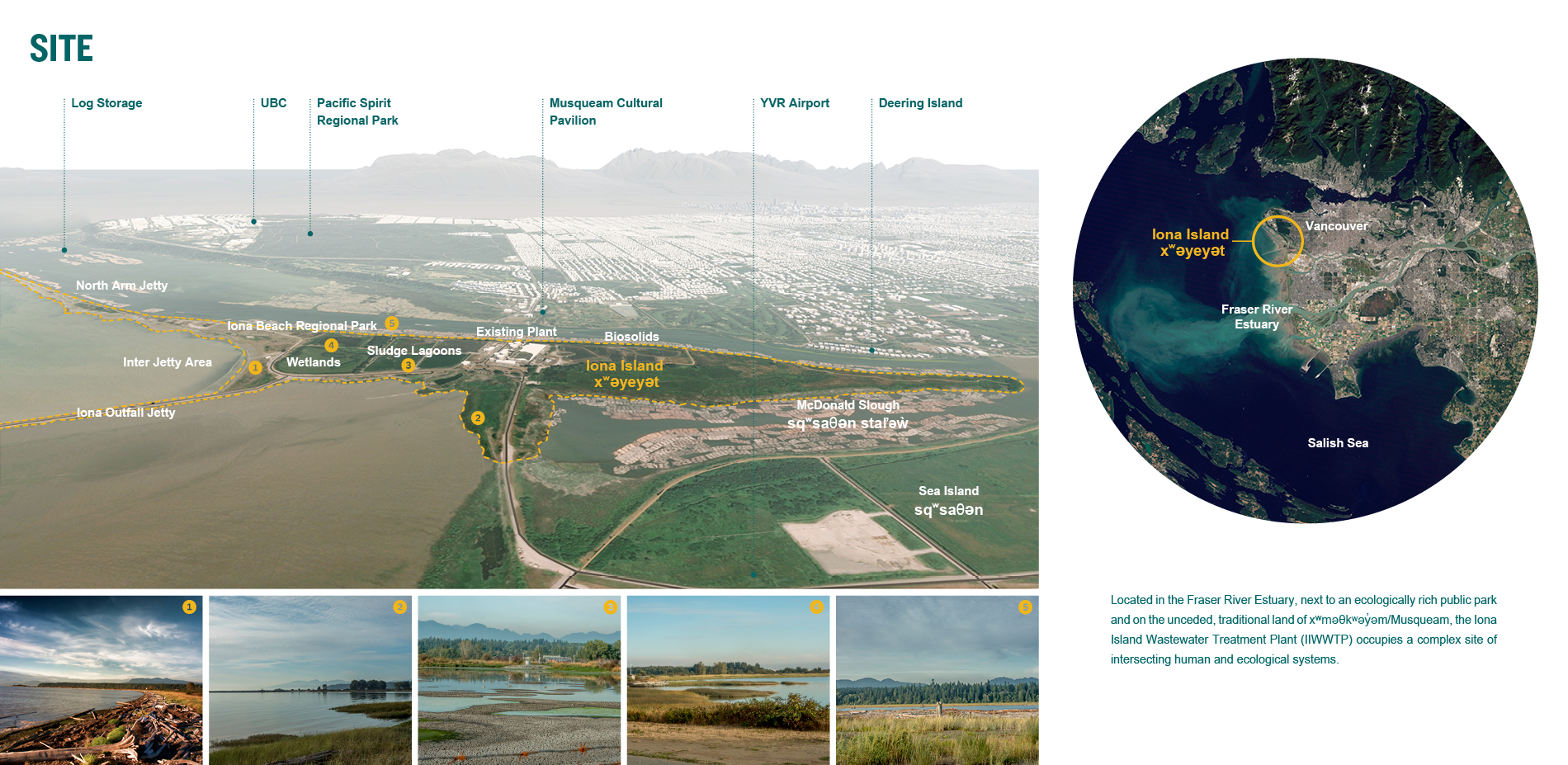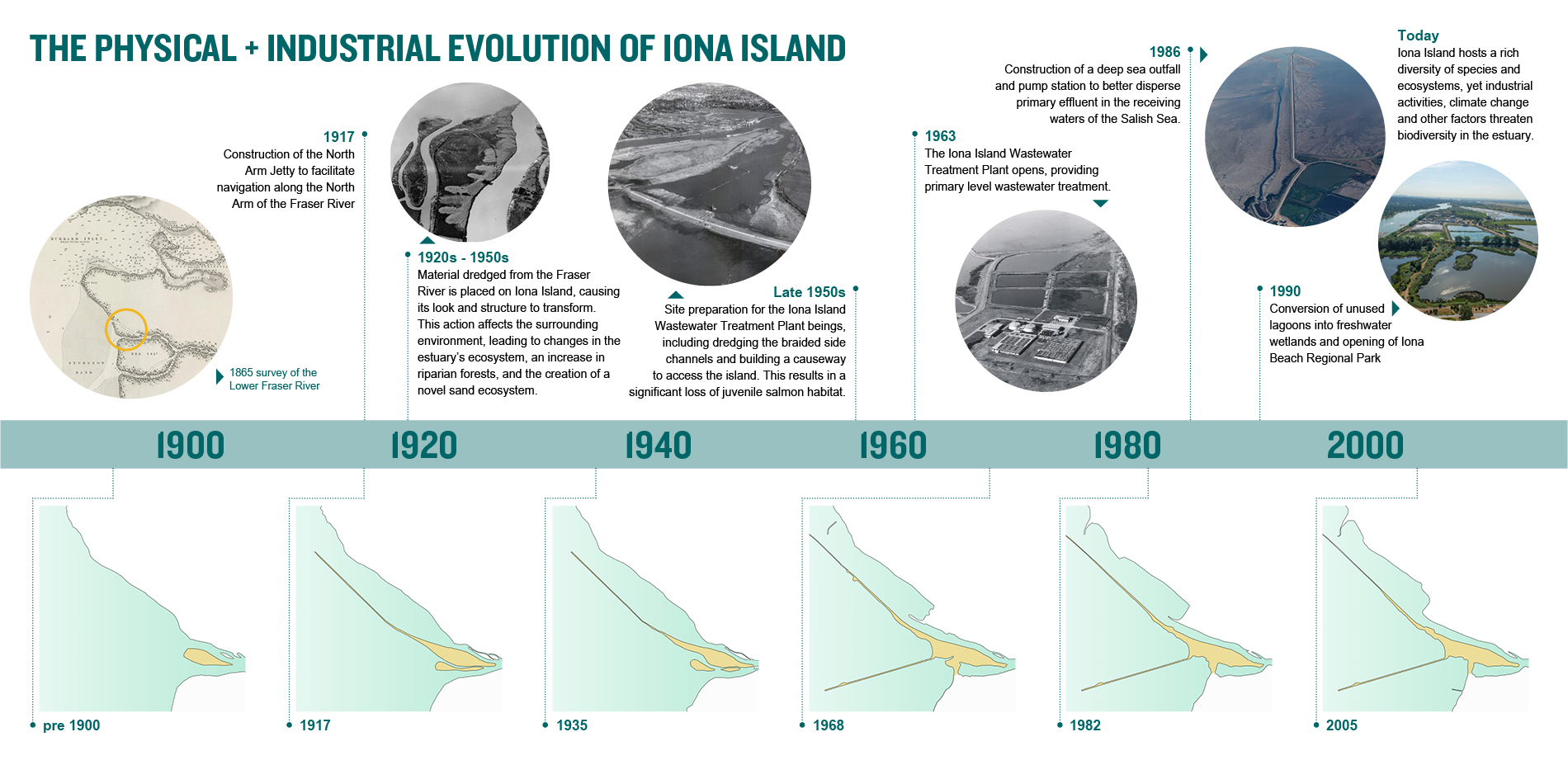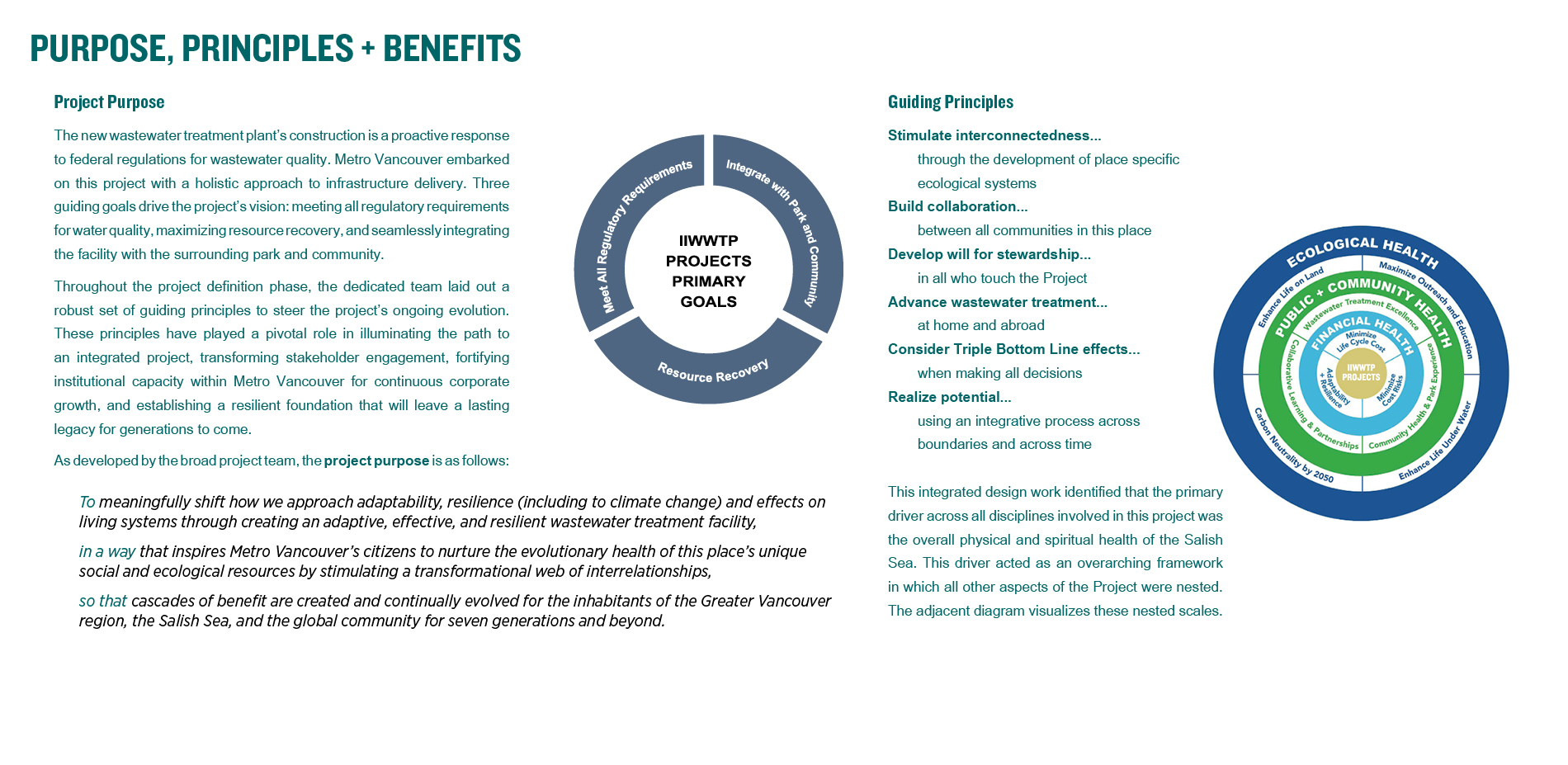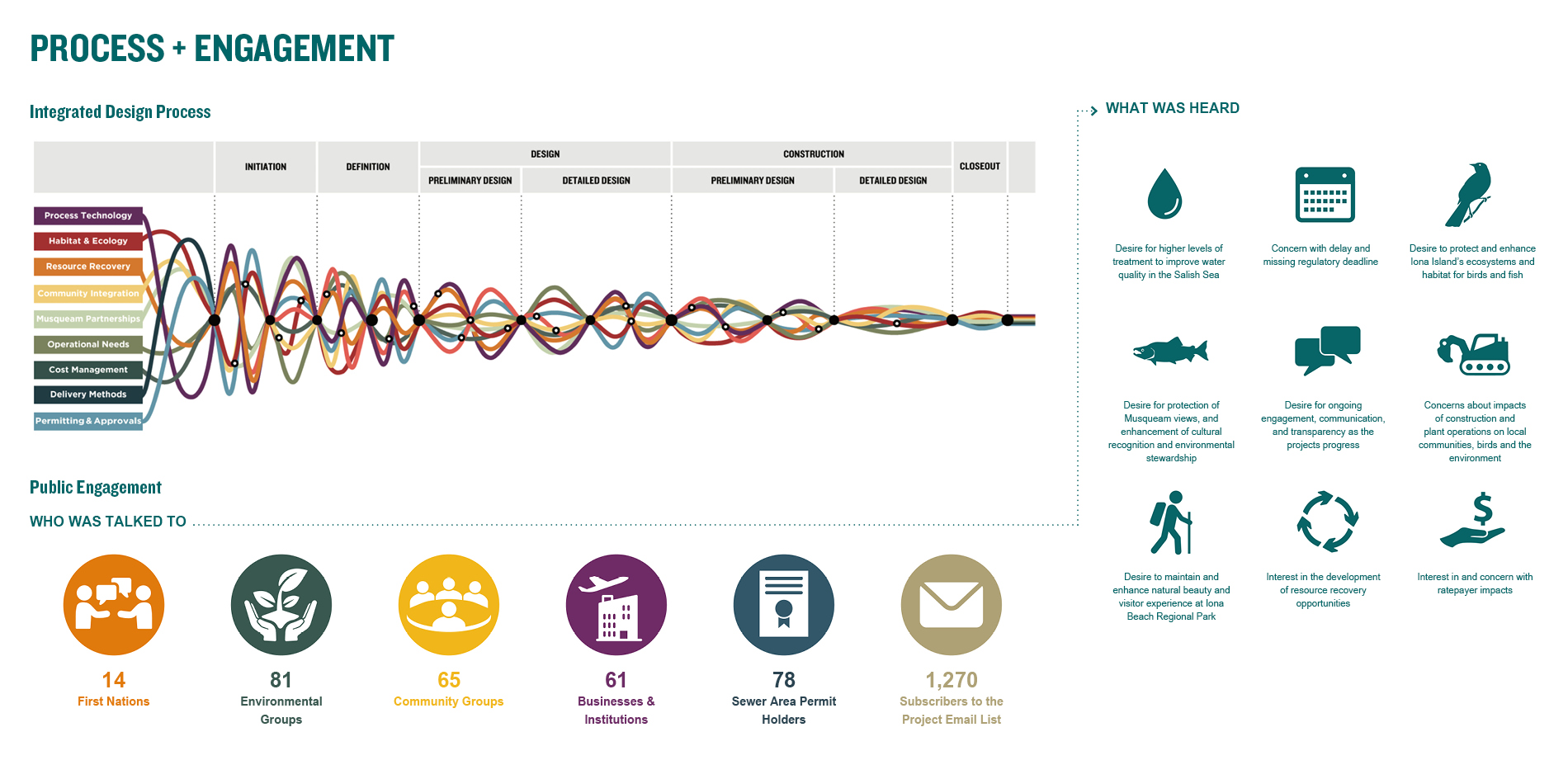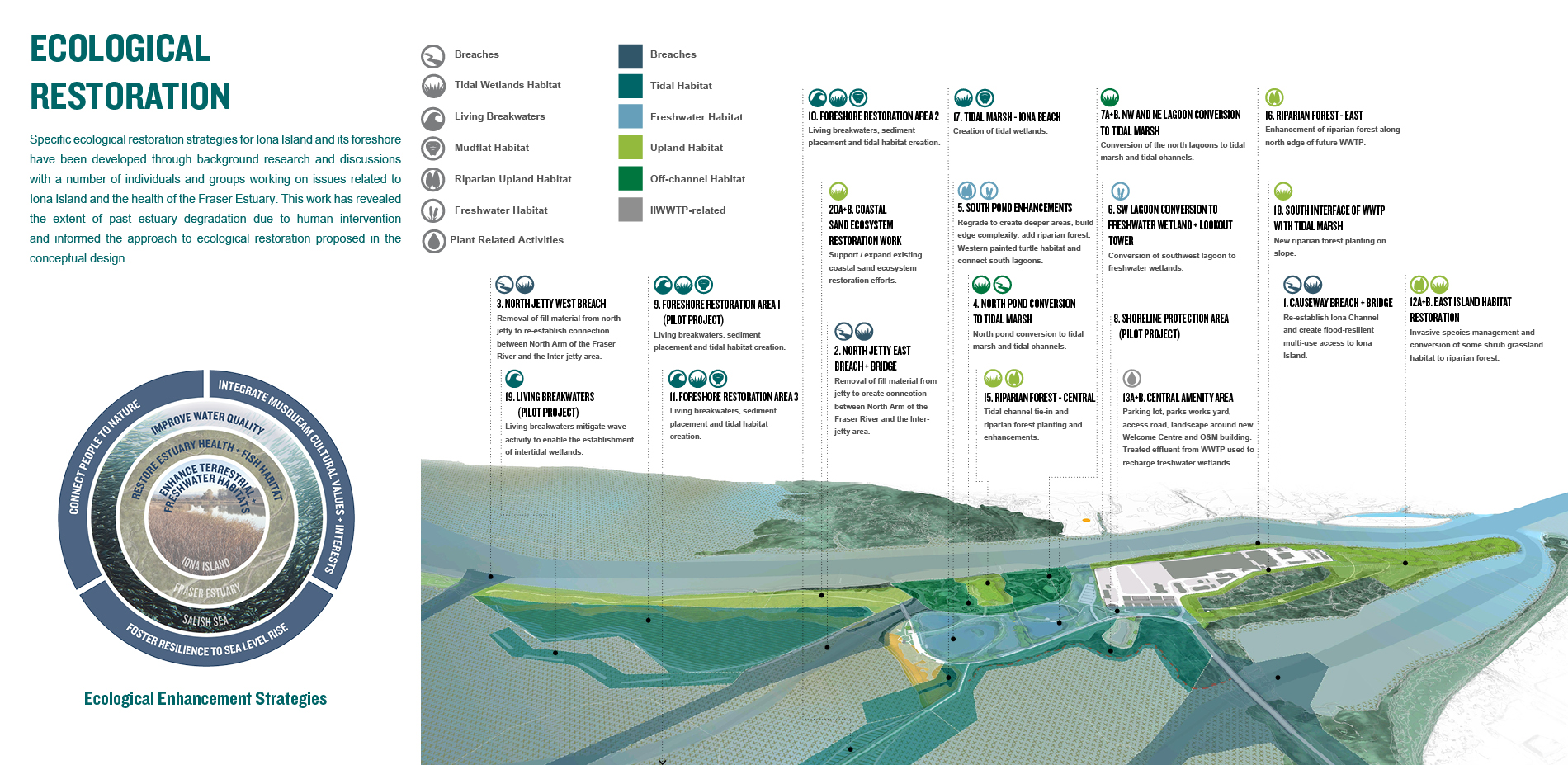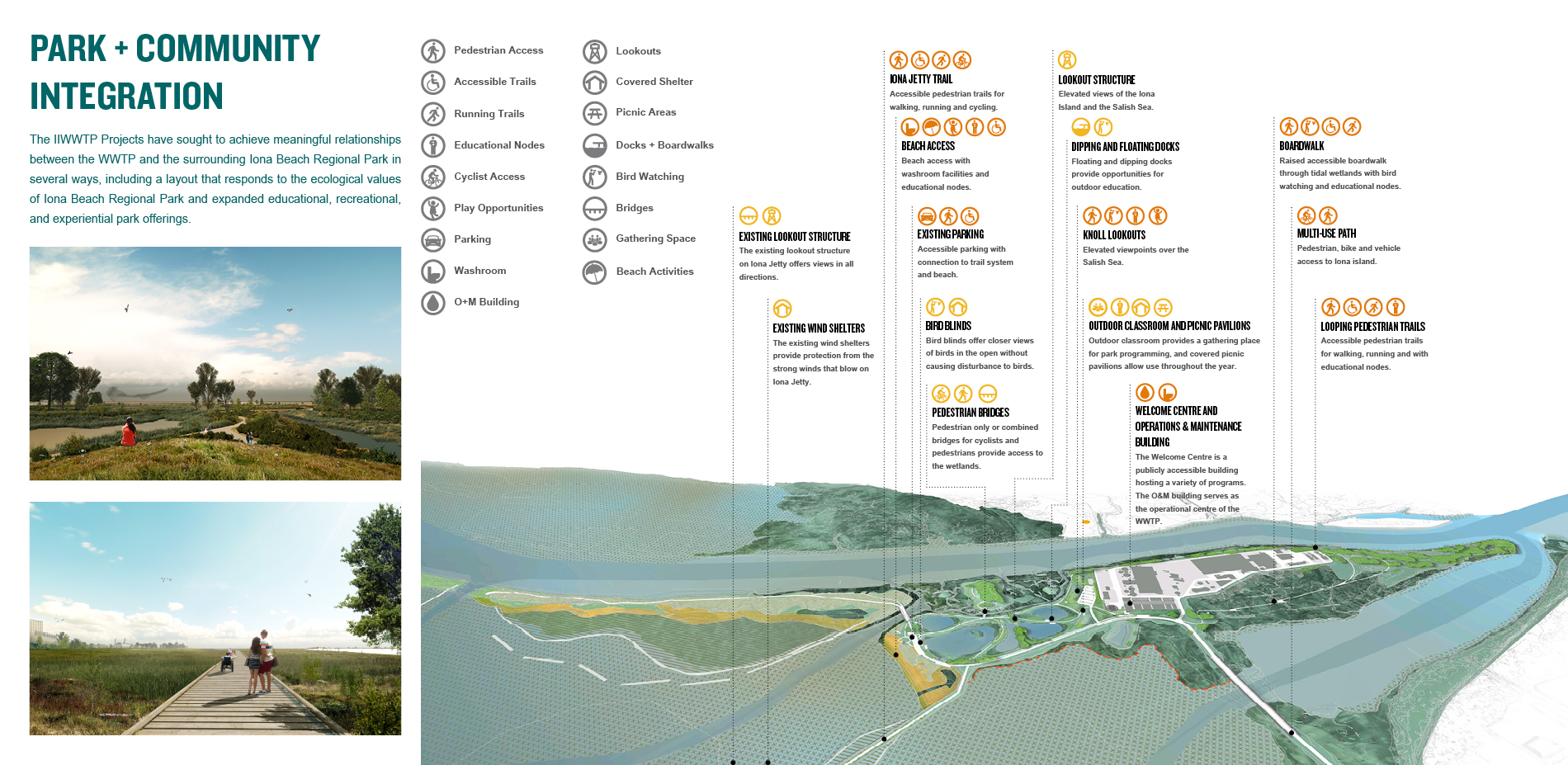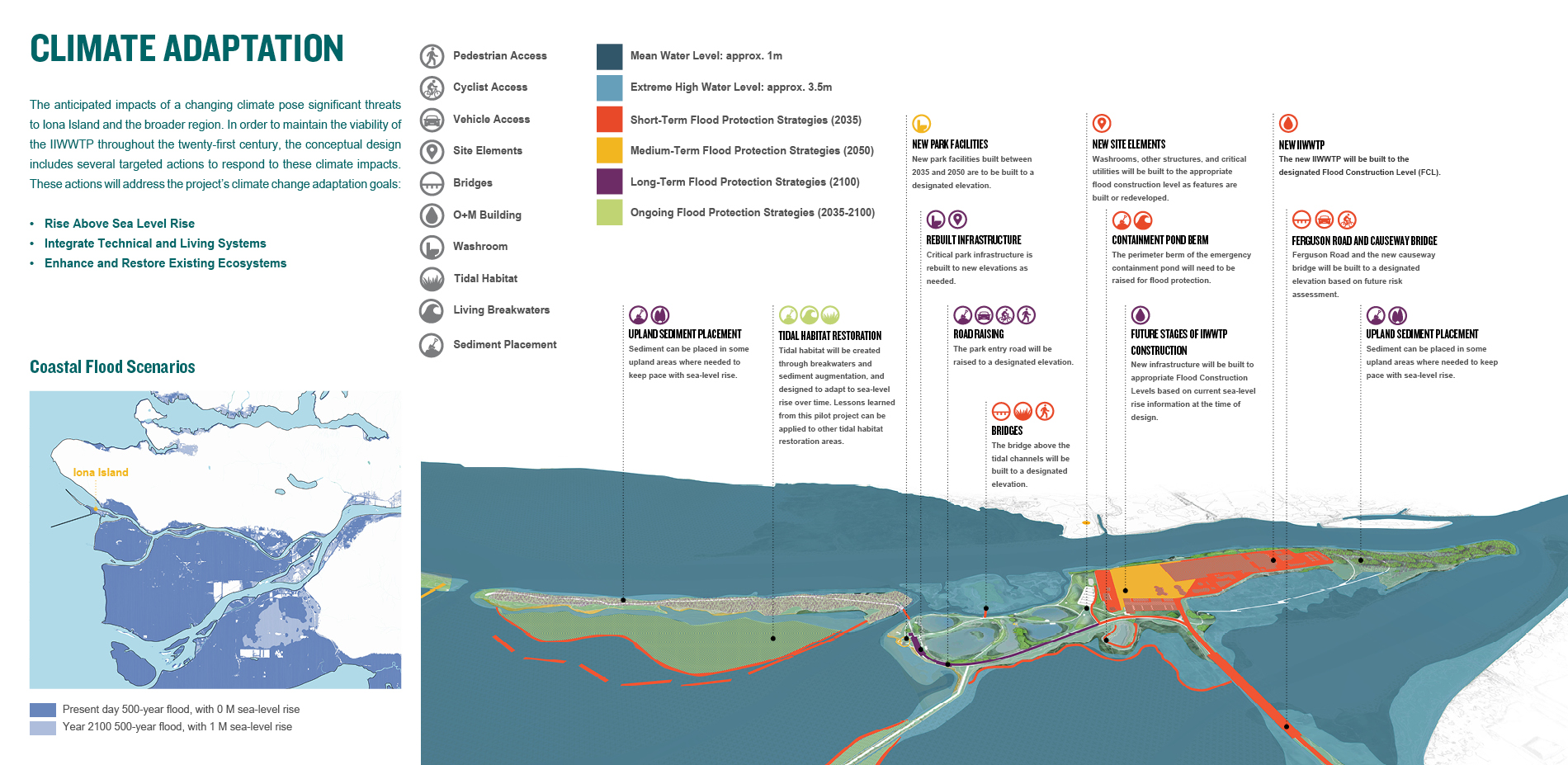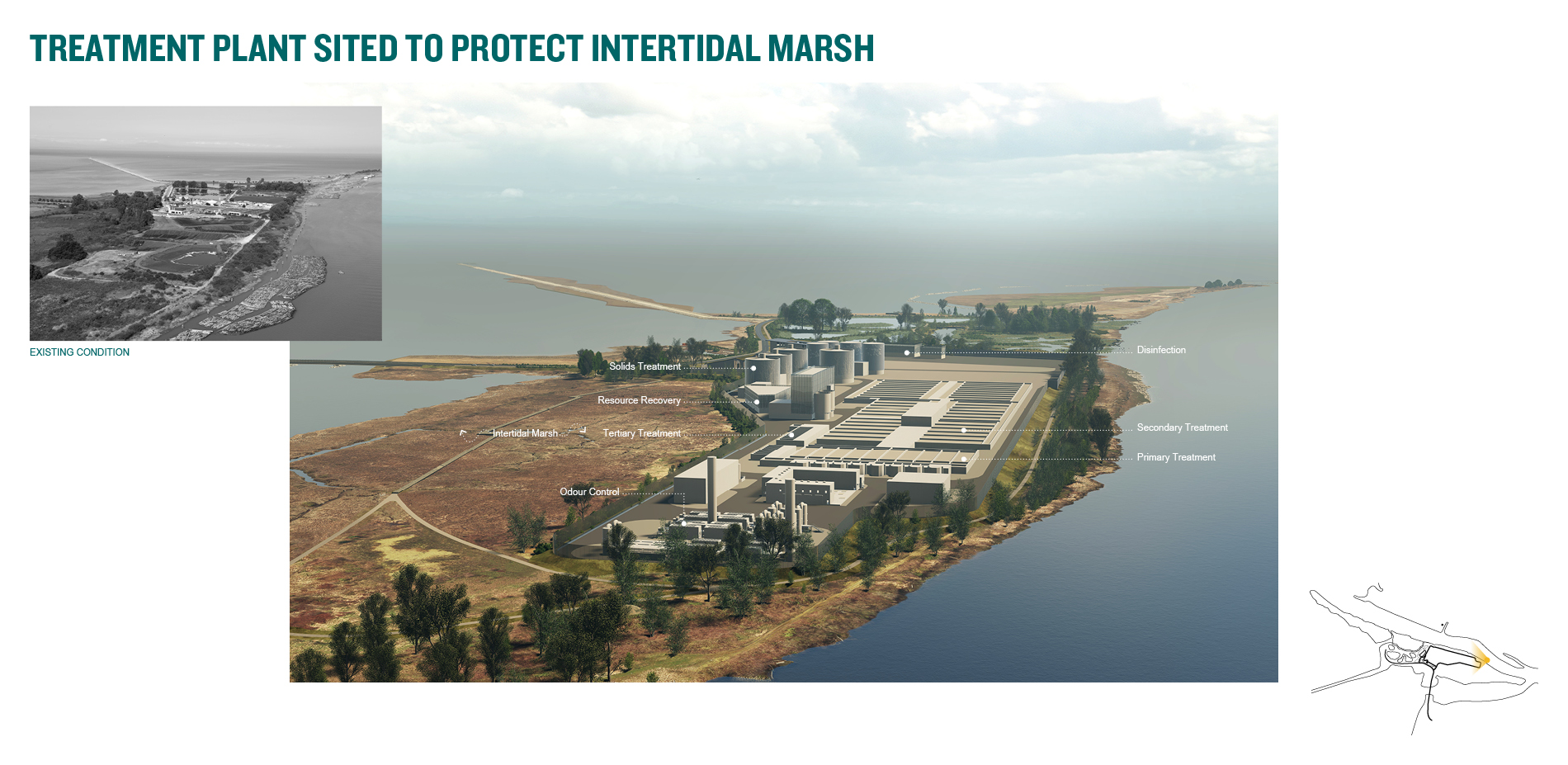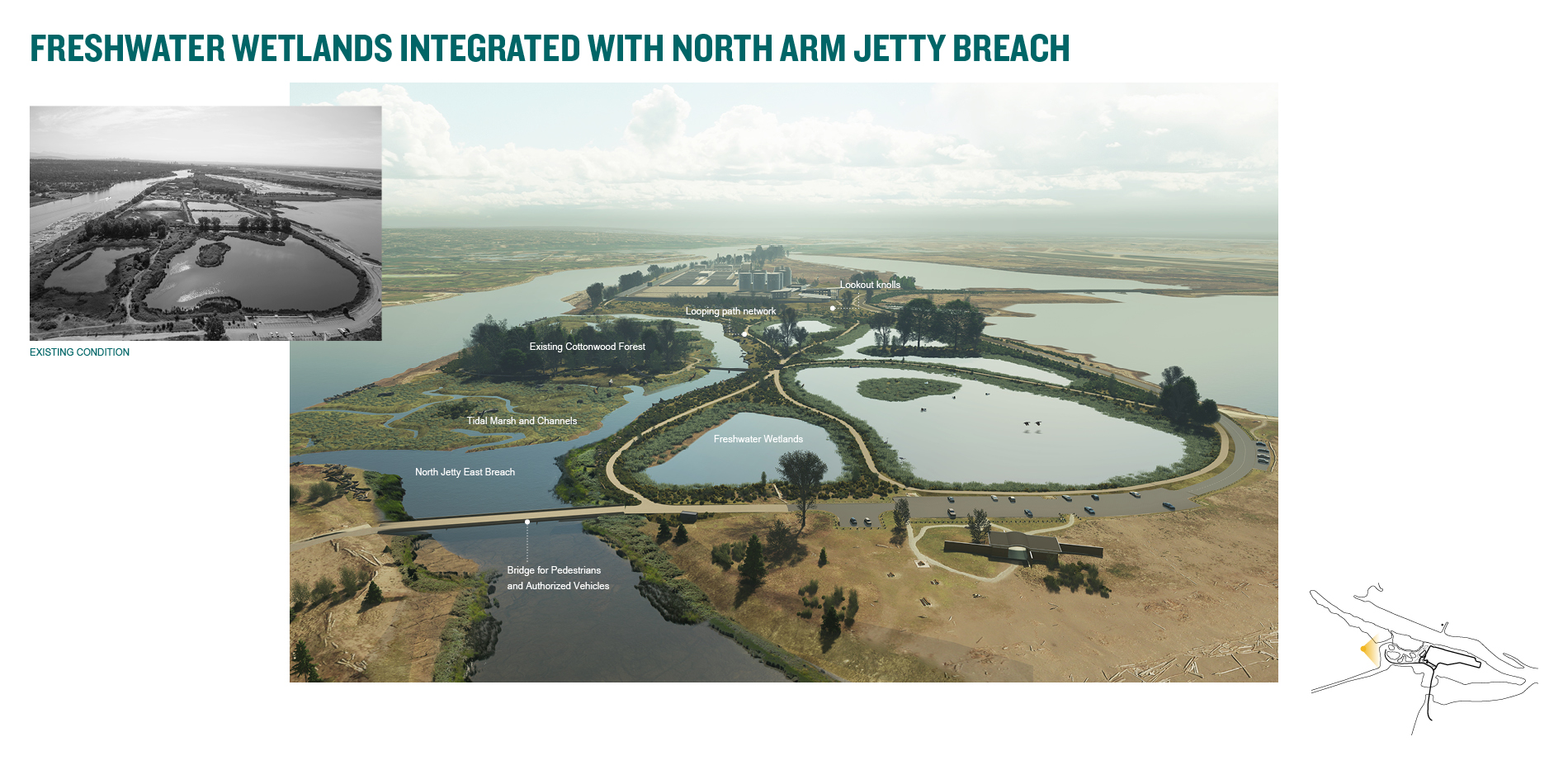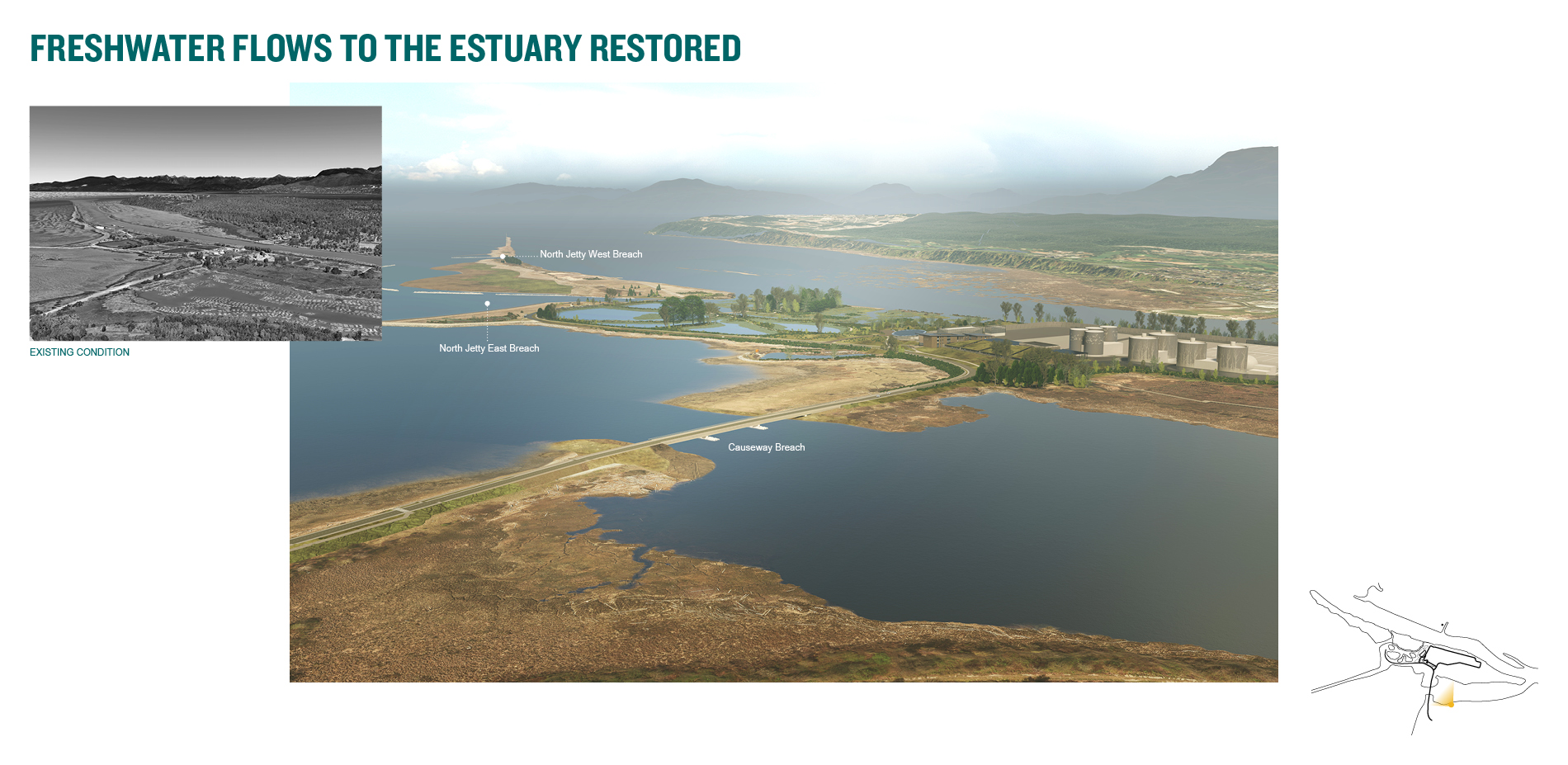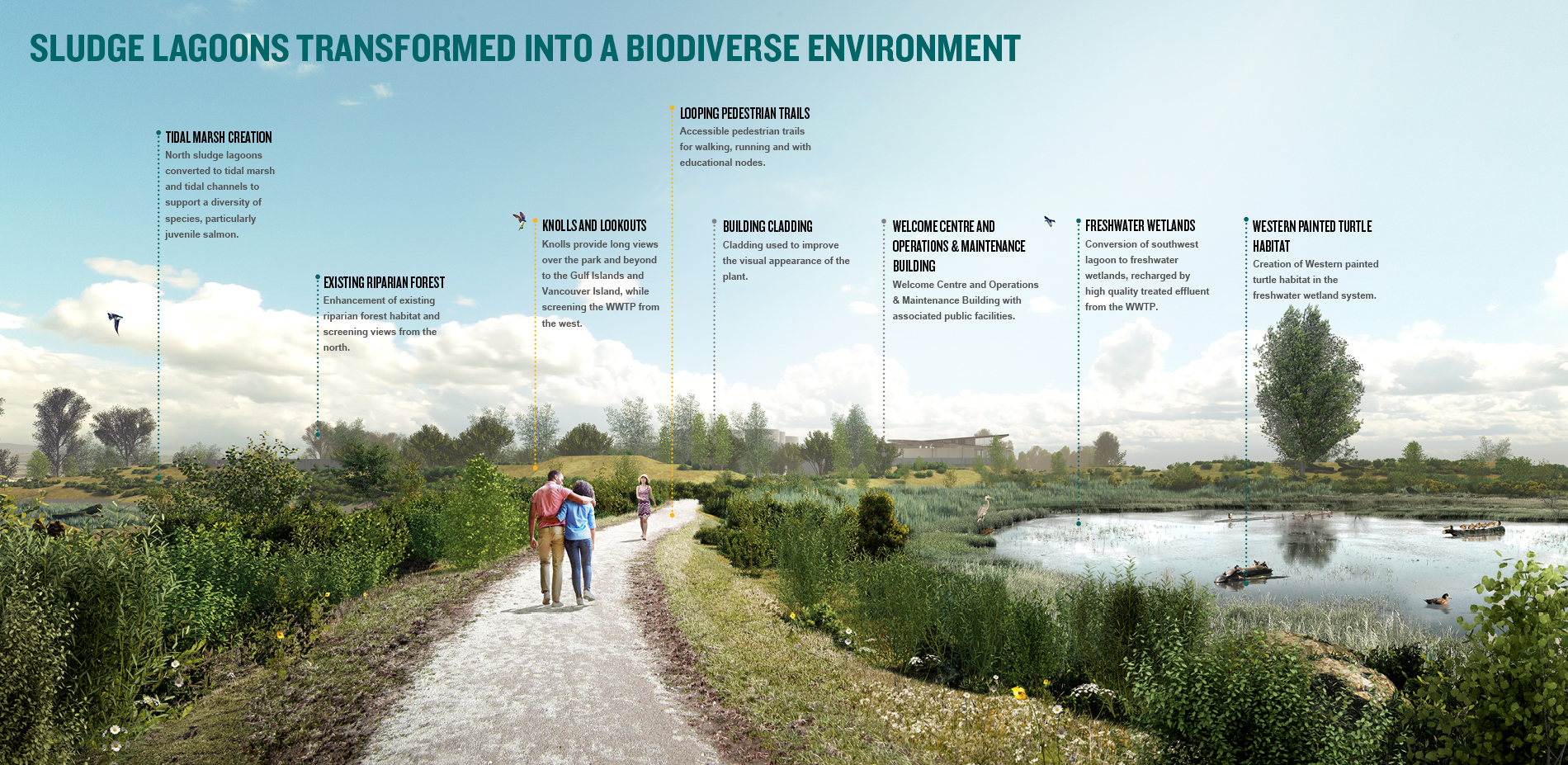Iona Beach / xwəyeyət Regional Park and WWTP
Honor Award
Analysis and Planning
Richmond, British Columbia, Canada
space2place design inc.
Client: Metro Vancouver
This project beautifully capitalizes on a transformative opportunity to integrate urban infrastructure with ecological restoration, climate adaptation, and Indigenous cultural knowledge. The numerous regenerative approaches layered into the plan are an innovative step towards reconciling development and nature by protecting and reviving the ecosystems and offering a successful model for Indigenous collaboration. Wonderful example of leveraging low profile infrastructure projects to achieve significant ecological restoration and climate adaptation.
- 2023 Awards Jury
Project Credits
The Miller Hull Partnership, Architects, Prime Consultant
Local Practice, Architects
AECOM, Engineering
Jacobs, Engineering
AldrichPears Associates, Interpretive Planning and Design
Kleanza Consulting, Archaeology
Raincoast Applied Ecology, Ecological consulting
Compass Resource Management, Structured Decision Making
7 Group, IDP Facilitators
Project Statement
The Iona Island Wastewater Treatment Plant (IIWWTP) and Regional Park Projects collectively represent the largest capital works project ever undertaken by Metro Vancouver. Driven by the need to upgrade the existing WWTP to meet federal regulations, the projects also offer a critical opportunity to provide significant benefits to the region. In addition to WWTP upgrades, the projects will restore dynamic estuary processes, increase the island’s resilience to climate change and expand educational and recreational offerings in the regional park. These projects are a transformative opportunity to integrate urban infrastructure with ecological restoration and climate adaptation and will create a significant, ongoing legacy for the region.
Project Narrative
The Iona Island Wastewater Treatment Plant (IIWWTP) in Richmond, BC sits on xʷəyeyət/Iona Island, a complex site of intersecting human and ecological systems. Located in the Fraser River Estuary and across from xʷməθkʷəy̓əm/Musqueam, the existing treatment facility is one of the last plants on North America's west coast with only primary level wastewater treatment. Existing infrastructure in the estuary, including dikes and jetties, has disrupted natural sediment and freshwater flows, directly impacting juvenile salmon and other species. Furthermore, climate change poses a significant threat to the region, with projections estimating one metre of sea level rise by 2100.
Required upgrades to the existing IIWWTP to meet federal regulations for wastewater effluent quality are the primary force driving the IIWWTP Projects. Yet, the ancillary works also offer a critical opportunity to provide significant benefits to the region. The conceptual design of the IIWWTP Projects has been developed as a portfolio of interrelated undertakings, including wastewater treatment plant upgrades, resource recovery initiatives, park and community integration strategies and ecological restoration projects. Guided by a regenerative approach, these projects will upgrade the existing plant to not only meet, but exceed, water quality treatment regulations, while making a net positive contribution to the surrounding communities and ecosystems.
Ecological projects will restore dynamic estuary processes and enhance native and novel habitats to benefit numerous species. Ecosystem-based flood protection strategies will increase resilience against climate change impacts and protect new infrastructure. Park and community integration strategies will enable meaningful relationships between the IIWWTP and the surrounding Iona Beach Regional Park. The strategies will ensure that the plant’s layout responds to ecologically sensitive areas and the community’s desire to minimize its visual impact, while expanding educational, recreational, and experiential park offerings.
An integrated design process brought together multi-disciplinary expertise to align the project's goals of improving water quality, resource recovery, and integration with the park and community. Throughout the project definition phase, an extensive engagement process was undertaken to work with a variety of organizations impacted by the IIWWTP Projects, including neighbours, park user groups, local government, and Indigenous groups. This collaborative process has enabled priorities such as habitat restoration, traditional resource access, and recognition of xʷməθkʷəy̓əm/Musqueam cultural practices and knowledge transfer to be integrated from early design stages. This process also demonstrated how to work inclusively across disciplines and jurisdictions to balance and integrate social, ecological, technical, and climate-related needs. Through the continuation of an integrated design and delivery process, work on the IIWWTP Projects will further develop and evolve until 2038, and continual improvement will be achieved through ongoing WWTP and park operations.
The IIWWTP Projects are an innovative step towards reconciling development and nature by protecting and reviving the ecosystems and flows that sustain us. These projects inspire a vision for interdisciplinary and Indigenous collaboration and nature-based solutions with the potential to establish a significant, ongoing legacy for the region.
